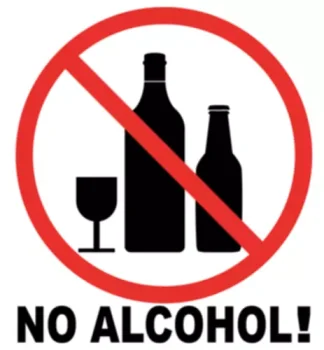
The effects of alcohol on human information processing have been investigated. Overall, various alcohol levels affect people differently, resulting in impaired judgment, muscle control, or vision (NHTSA, 2019). Prevention campaigns in the United States began in earnest in the early 1980s (2).
How Long After Drinking Is It Safe to Drive?
See Figure 2-1 for more details on fatalities by role in alcohol-impaired driving crashes. Children are particularly vulnerable to alcohol-impaired driving crash fatalities. Most child passengers (61 percent) who were involved in an alcohol-impaired driving crash from 2001 to 2010 were unrestrained at the time of the collision (Quinlan et al., 2014). Data on pedestrian traffic fatalities in 2016 indicate that these are on the rise, and 15 percent of drivers involved in these crashes had a BAC of 0.08% or greater (Retting, 2017).

The effect of alcohol on the physiological performance of the driver
From its initiation in fiscal year (FY) 1998 through FY 2008, the program received $25 million in annual appropriations from Congress (NASADAD, 2016). Appropriation amounts decreased each year thereafter, with $2.5 million appropriated in FY 2014; in FYs 2015 and 2016 the program was not funded at all (NASADAD, 2016). Department of Education’s Safe and Drug-Free Families and Communities program was substantially decreased in FY 2011 and has remained completely unfunded since FY 2012 (HHS and SAMHSA, 2016). See Table 7-1 for funding of federal substance abuse prevention programs from 2009 to 2014. With someone dying in a drunk driving accident every 50 minutes in the United States, your safest bet is to not get behind the wheel after drinking.
Penalties for Alcohol / Drug Related Violations

Although 14 percent of drivers in alcohol-related fatal crashes in 2002 were between 16 and 20, this age group represents only 7 percent of the population. Likewise, 49 percent of drivers in alcohol-related fatal crashes were ages 21 to 45, and this age group makes up 35 percent of the population. Most drivers in alcohol-related fatal crashes are male (73 percent) (NHTSA 2003a,e). However, the transition from manual to automated driving introduces unique challenges and opportunities.

Alcohol Detox: Guidelines for Successfully Detoxifying from Alcohol
Despite the high volume of drunk driving episodes, only a small percentage of impaired drivers are arrested. Tough enforcement of drunk-driving laws has been a major factor in reducing drunk-driving deaths since the 1980s. Charges range from misdemeanors to felony offenses, and penalties for impaired driving can include driver’s license revocation, fines, and jail time. A first-time offense can cost the driver upwards of $10,000 in fines and legal fees. Over 10,000 people die each year in the U.S. from alcohol-related car crashes. And every two minutes, someone is injured in a car accident involving alcohol.
- Consequences of drinking and driving can hurt your family and relationships, cost you employment opportunities, cause financial difficulties, high insurance rates and possible time in jail.
- Inpatient and outpatient treatment programs are available across the country.
- Appropriation amounts decreased each year thereafter, with $2.5 million appropriated in FY 2014; in FYs 2015 and 2016 the program was not funded at all (NASADAD, 2016).
- In contrast, among drivers with BACs of 0.15 percent or higher, 28 percent experienced a vehicle overturn and 33 percent struck a fixed object (NHTSA 2003a).
- According to the 2019 National Survey on Drug Use and Health from the Substance Abuse and Mental Health Services Administration, 69.5% of people in the United States reported drinking within the last year.
- A BAC of .08 grams of alcohol per deciliter (g/dL) or higher is above the legal limit in the United States.
- Deaths and injuries are the most severe outcomes of drinking and driving, but these aren’t the only potential consequences.
- With someone dying in a drunk driving accident every 50 minutes in the United States, your safest bet is to not get behind the wheel after drinking.
- Also, your driving skills can be affected even if you’re well under the legal limit, which could also result in legal problems.
- Clearly, people who meet established alcohol dependence criteria are disproportionately involved in alcohol-related motor vehicle crashes, accounting for approximately two-thirds of motor vehicle crashes involving alcohol (Hingson et al. 2002).
- In another study that examined BRFSS data from 2003 and 2004, drinking drivers who drank most of their alcohol in licensed establishments consumed an average of 8.1 alcoholic beverages on one occasion, and about one-fourth of this group consumed 10 or more drinks (Naimi et al., 2009).
Distracted driving occurs when drivers divert their attention from the driving task to another activity (e.g., texting, eating, talking to other passengers, or adjusting radio or climate controls). Talking and texting on cell phones are not only a distraction as manual tasks but also a cognitive distraction, and the combination of cognitive distraction with alcohol https://ecosoberhouse.com/ impairment increases the already heightened crash risk of either impairment alone. Distracted driving has increased over time and contributes to an increasing amount of motor vehicle crash fatalities per year (Wilson and Stimpson, 2010). In 2016, crash fatalities that involved distracted driving made up 9 percent of total crash fatalities (NCSA, 2017a).

NHTSA is dedicated to eliminating risky behaviors on our nation’s roads
Additionally, almost one-quarter of college students who self-identify as current drinkers consume alcohol with energy drinks, putting themselves at a higher risk of serious consequences, as caffeine affects a drinker’s ability to judge their level of impairment (O’Brien et al., 2008). Data from the 2005–2011 Monitoring the Future study also show that about one-fifth of high school seniors binge drink, and intensity of binge drinking is higher for students in rural areas (Patrick et al., 2013). Research has long indicated that raising consequences of drinking and driving the minimum legal drinking age (MLDA) to 21 has reduced alcohol-related crashes among drivers under 21 (Shults et al. 2001). This study raises the possibility that delaying underage drinking may reduce alcohol-related crash involvement among adults as well (Hingson et al. 2002). In an analysis of the effects of increasing the MLDA to 21, O’Malley and Wagenaar (1991) found that people who grew up in States with the legal drinking age of 21 not only drank less when they were younger than 21, they also drank less from ages 21 to 25.
- Sobriety checkpoints, an effective countermeasure when conducted properly (Bergen et al., 2014), are not implemented uniformly from state to state.
- Thus, drink-driving is a significant public health problem that affects not only the alcohol user but also, in many cases, innocent parties such as passengers and pedestrians.
- Additionally, fatal crashes involving a 0.08% BAC level or higher are charged as alcohol-impaired driving fatalities.
- It may also become difficult to rent a car or even enter certain countries if you have an alcohol-related driving conviction on your record.
- Here, we look at some of the most common reasons drunk driving occurs, according to research, and the steps you can take to prevent yourself from getting behind the wheel while impaired.



